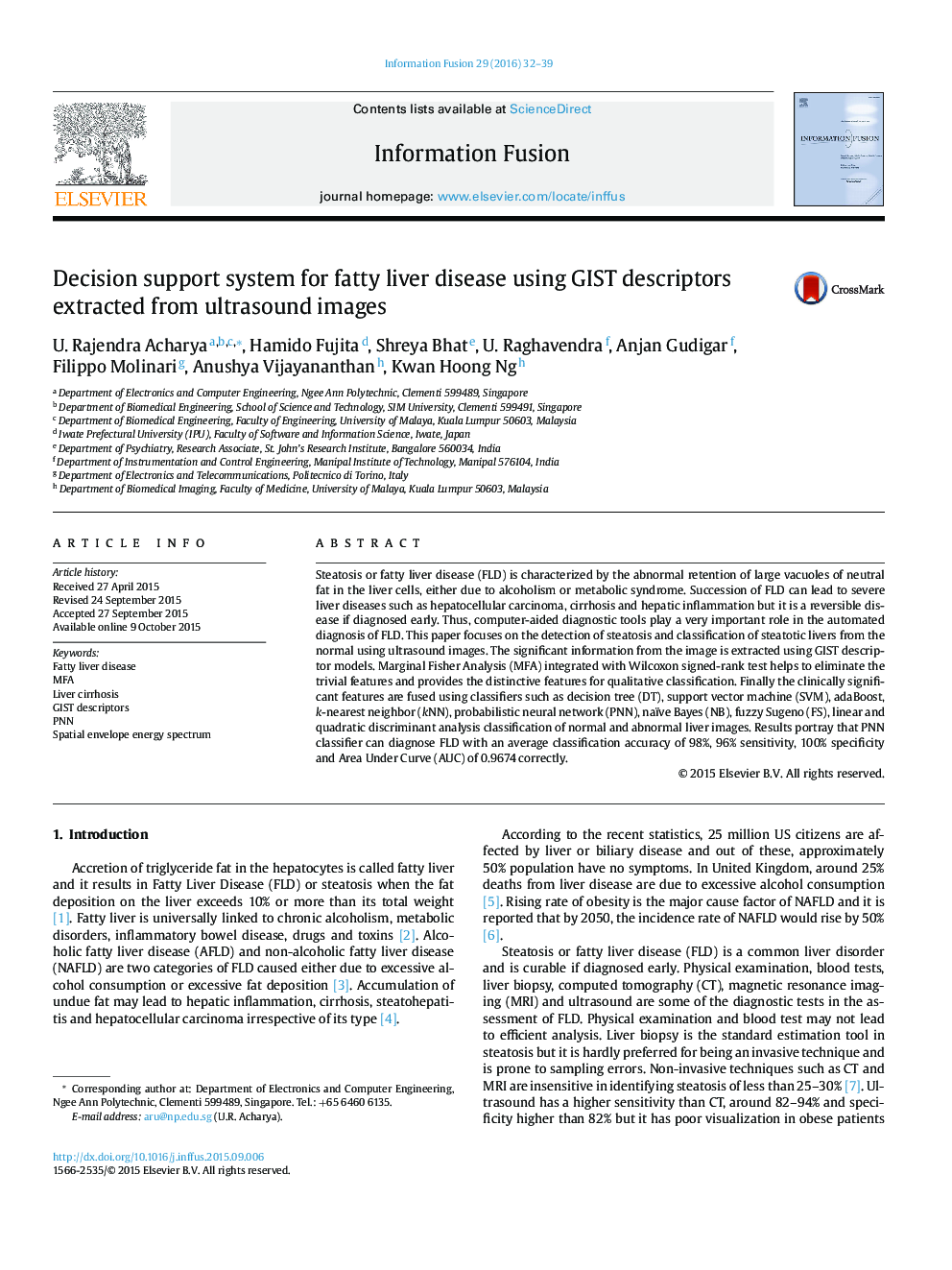| Article ID | Journal | Published Year | Pages | File Type |
|---|---|---|---|---|
| 528031 | Information Fusion | 2016 | 8 Pages |
•Classification of fatty liver disease and normal images is proposed.•GIST descriptor and Marginal Fisher Analysis methods are used.•Ranked features are subjected to various classifiers.•Proposed system obtained an average accuracy of 98%.
Steatosis or fatty liver disease (FLD) is characterized by the abnormal retention of large vacuoles of neutral fat in the liver cells, either due to alcoholism or metabolic syndrome. Succession of FLD can lead to severe liver diseases such as hepatocellular carcinoma, cirrhosis and hepatic inflammation but it is a reversible disease if diagnosed early. Thus, computer-aided diagnostic tools play a very important role in the automated diagnosis of FLD. This paper focuses on the detection of steatosis and classification of steatotic livers from the normal using ultrasound images. The significant information from the image is extracted using GIST descriptor models. Marginal Fisher Analysis (MFA) integrated with Wilcoxon signed-rank test helps to eliminate the trivial features and provides the distinctive features for qualitative classification. Finally the clinically significant features are fused using classifiers such as decision tree (DT), support vector machine (SVM), adaBoost, k-nearest neighbor (kNN), probabilistic neural network (PNN), naïve Bayes (NB), fuzzy Sugeno (FS), linear and quadratic discriminant analysis classification of normal and abnormal liver images. Results portray that PNN classifier can diagnose FLD with an average classification accuracy of 98%, 96% sensitivity, 100% specificity and Area Under Curve (AUC) of 0.9674 correctly.
